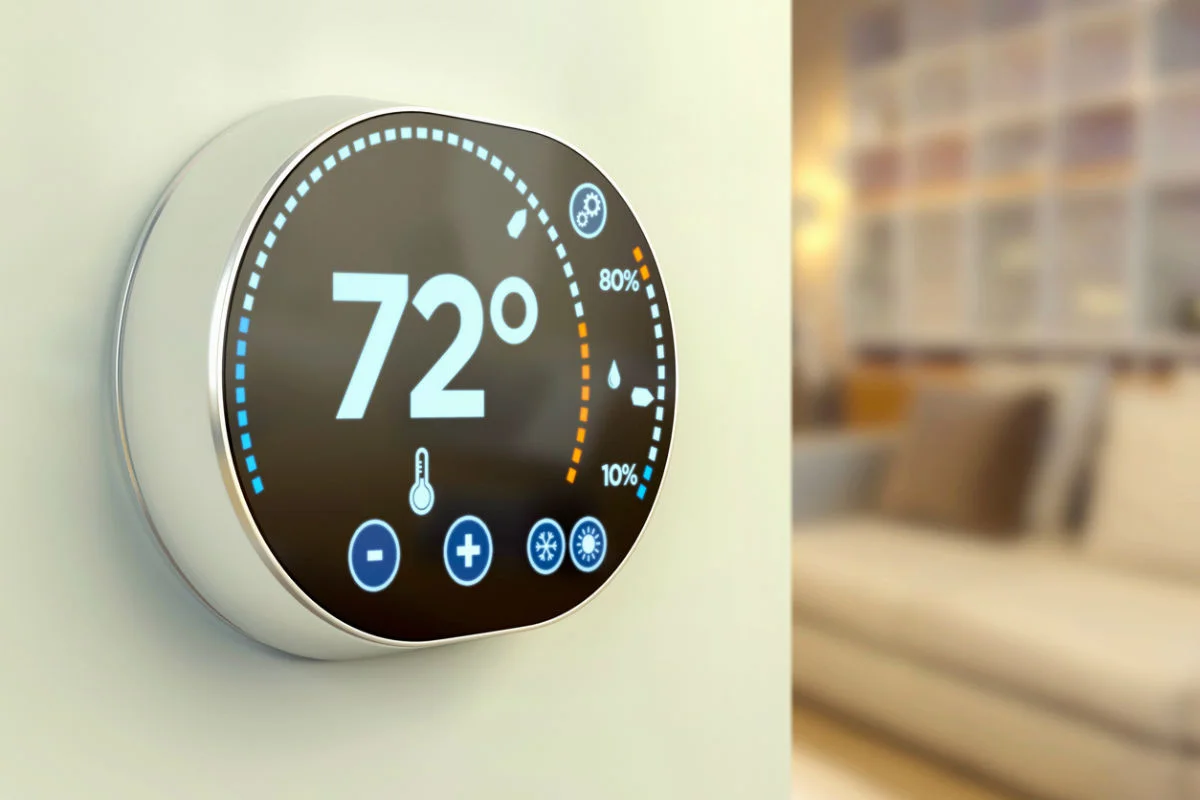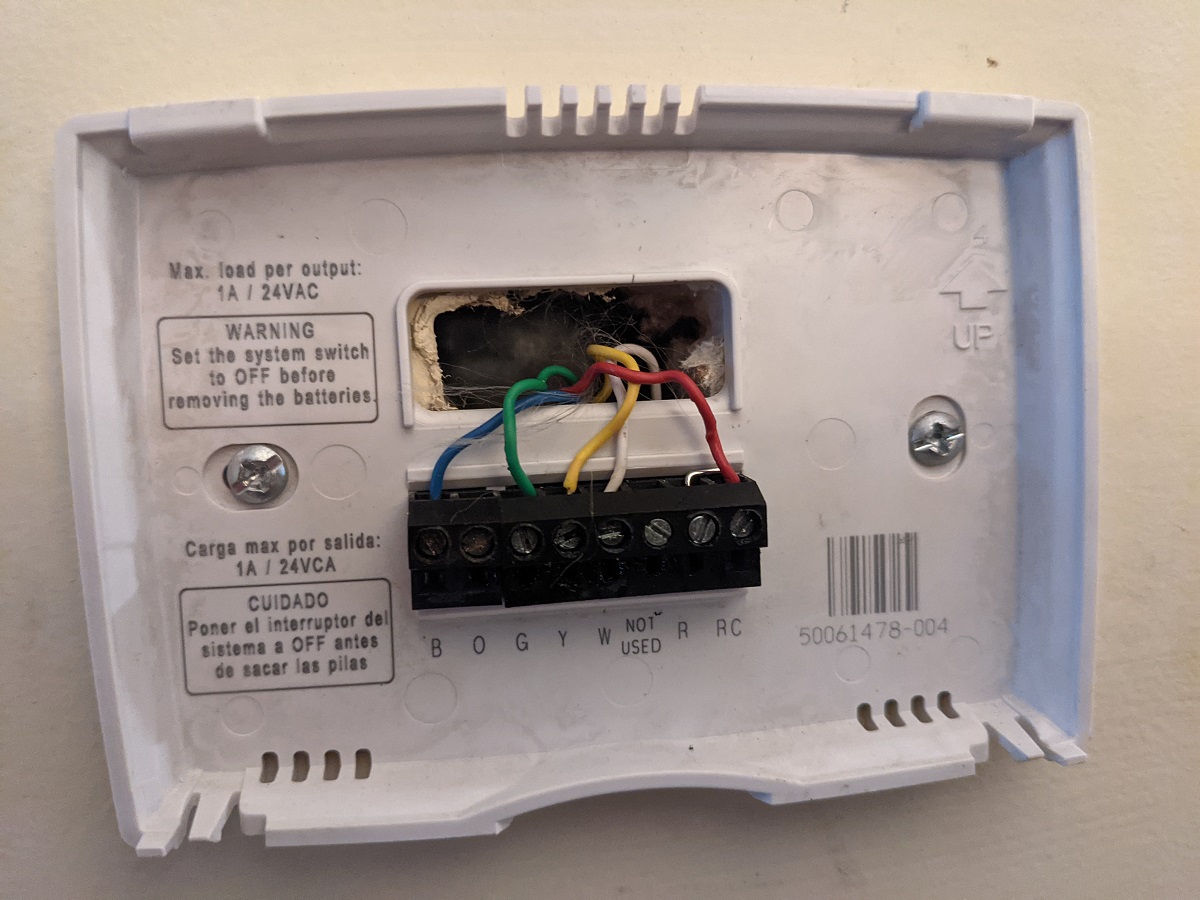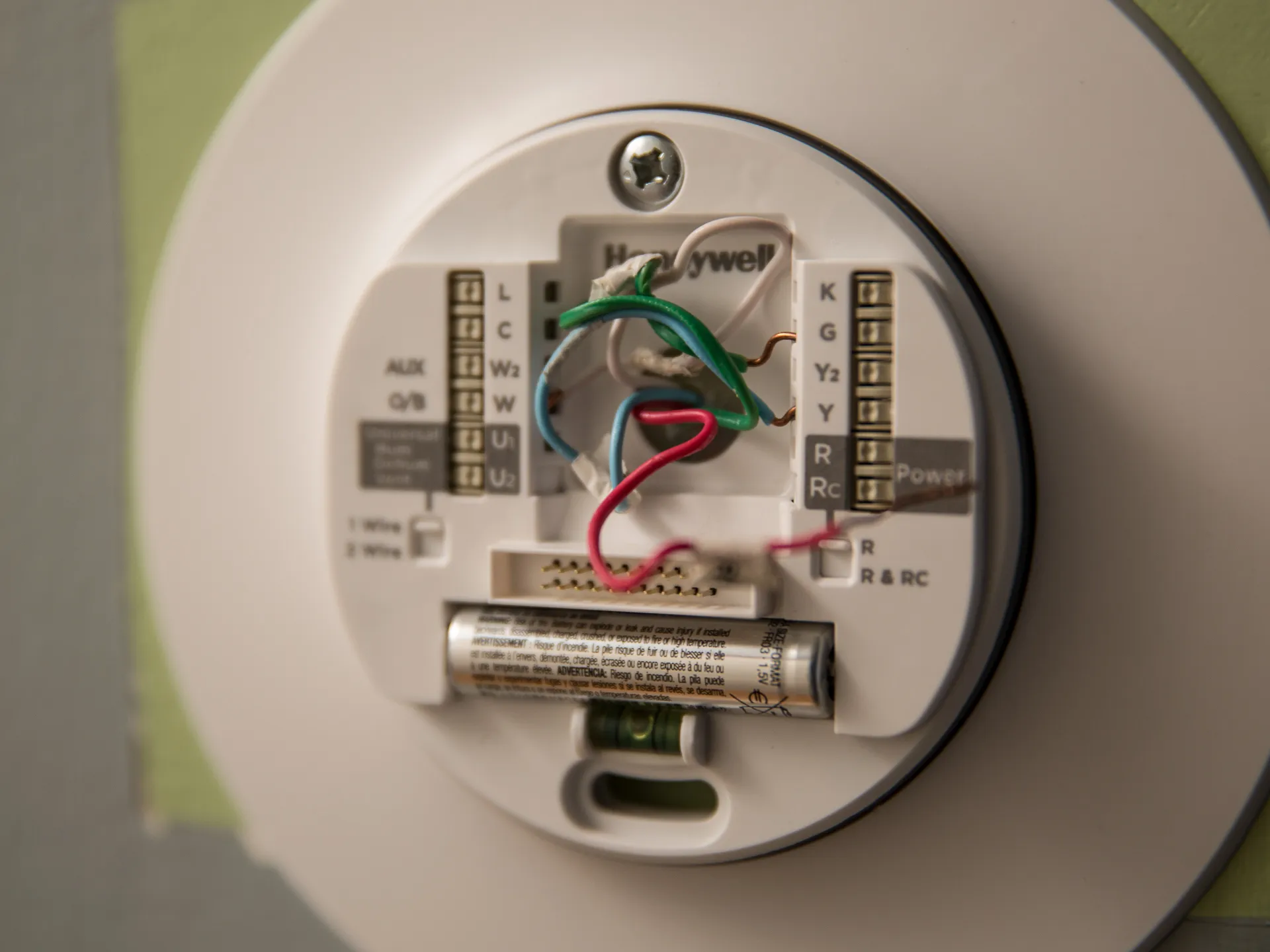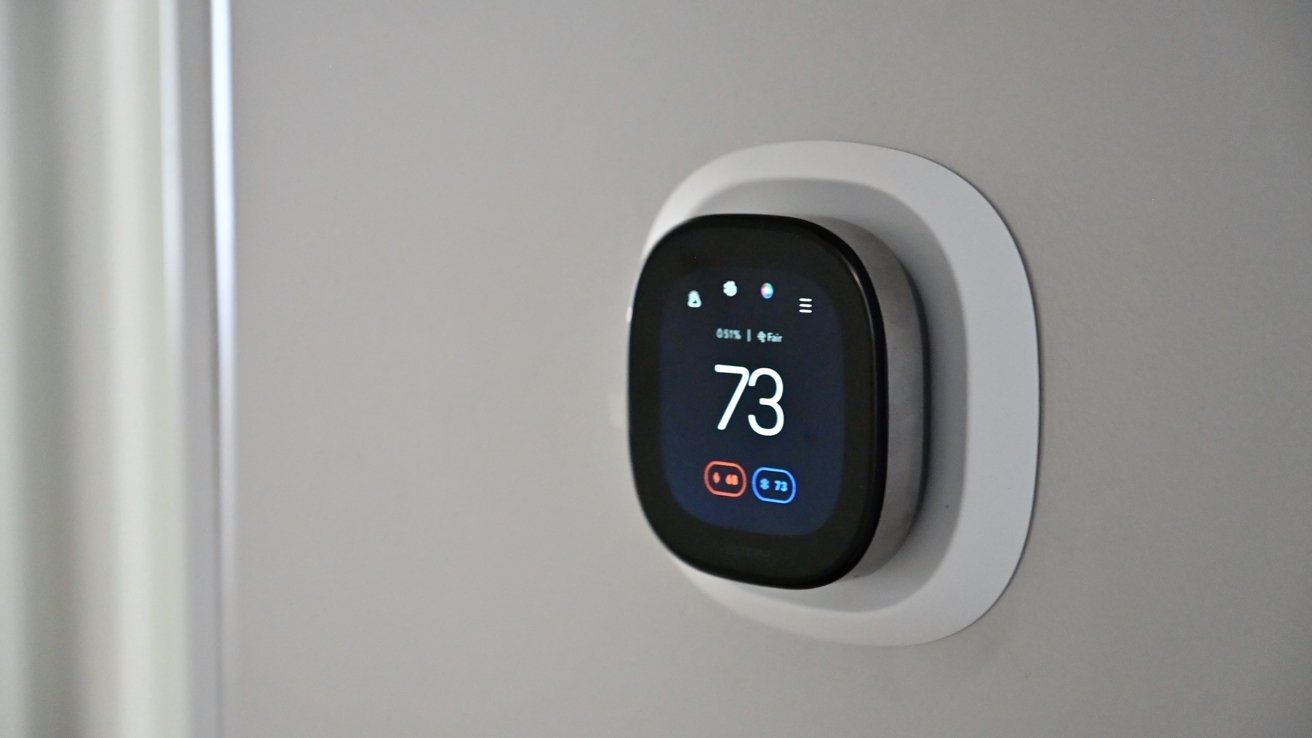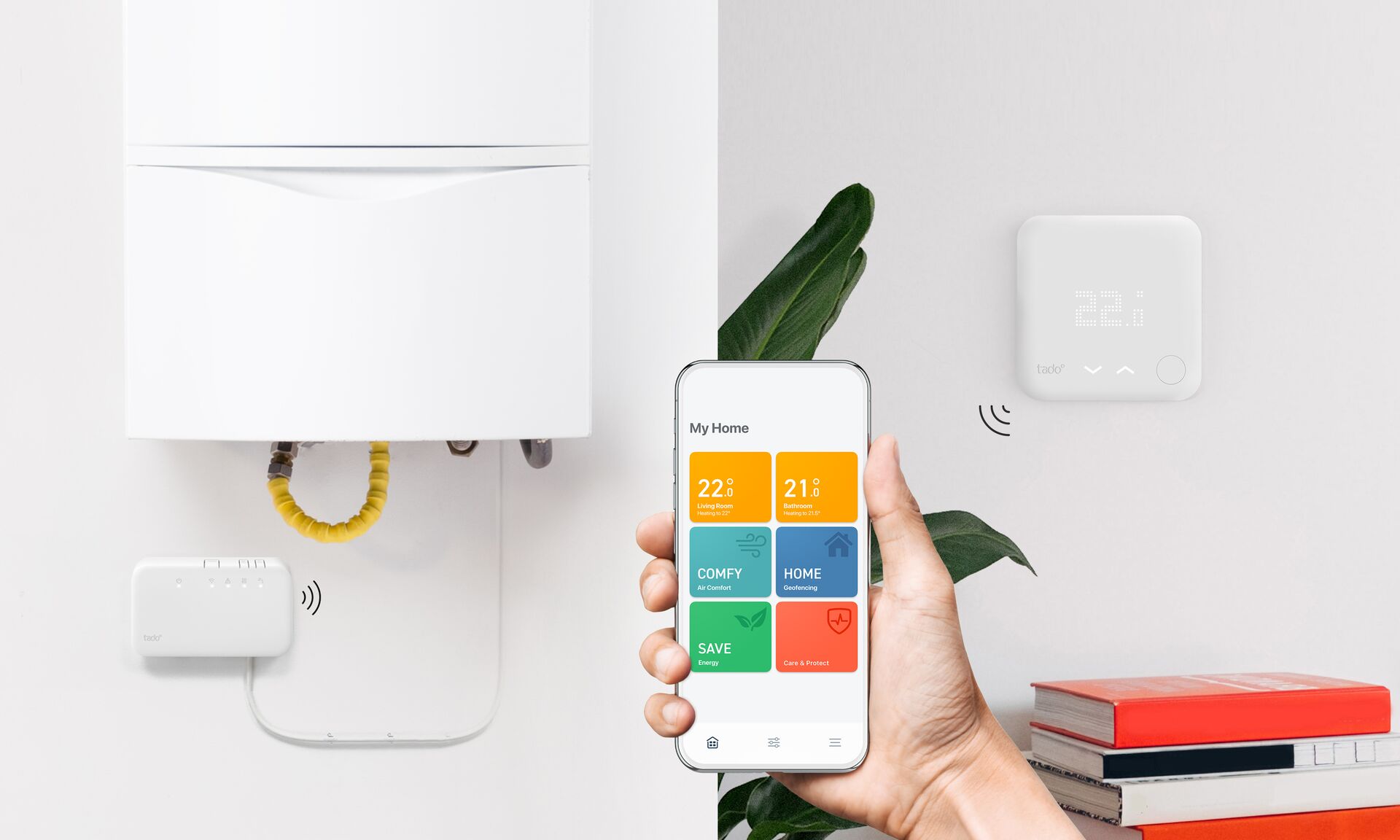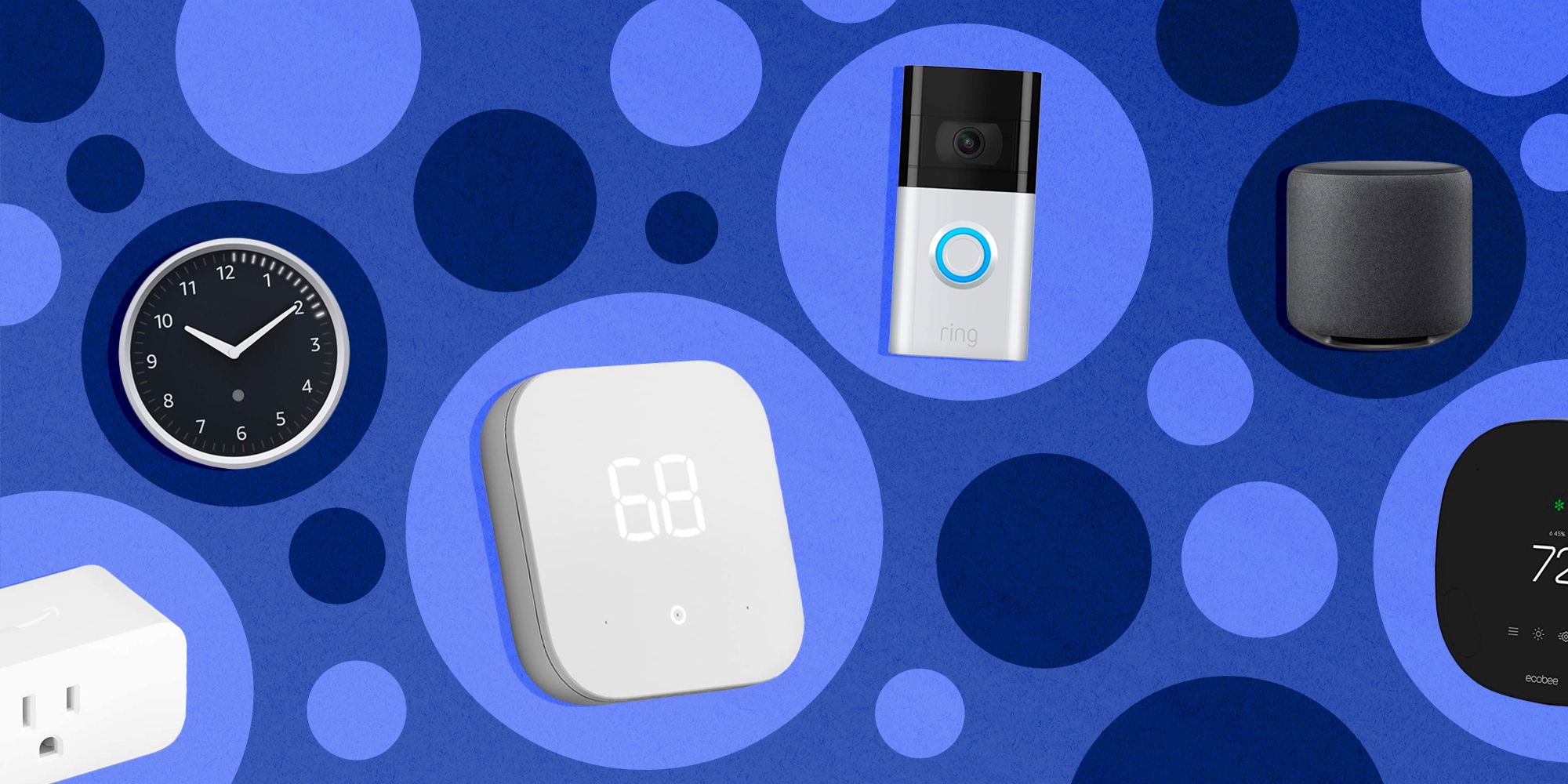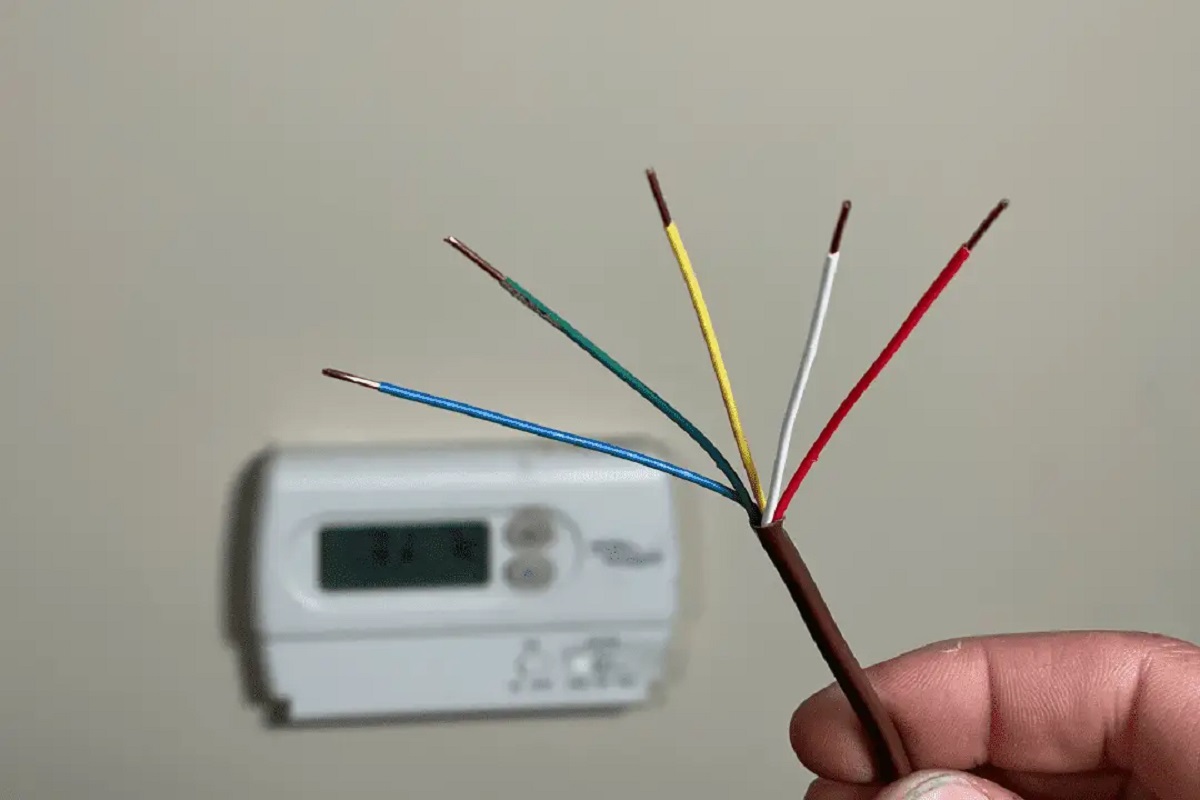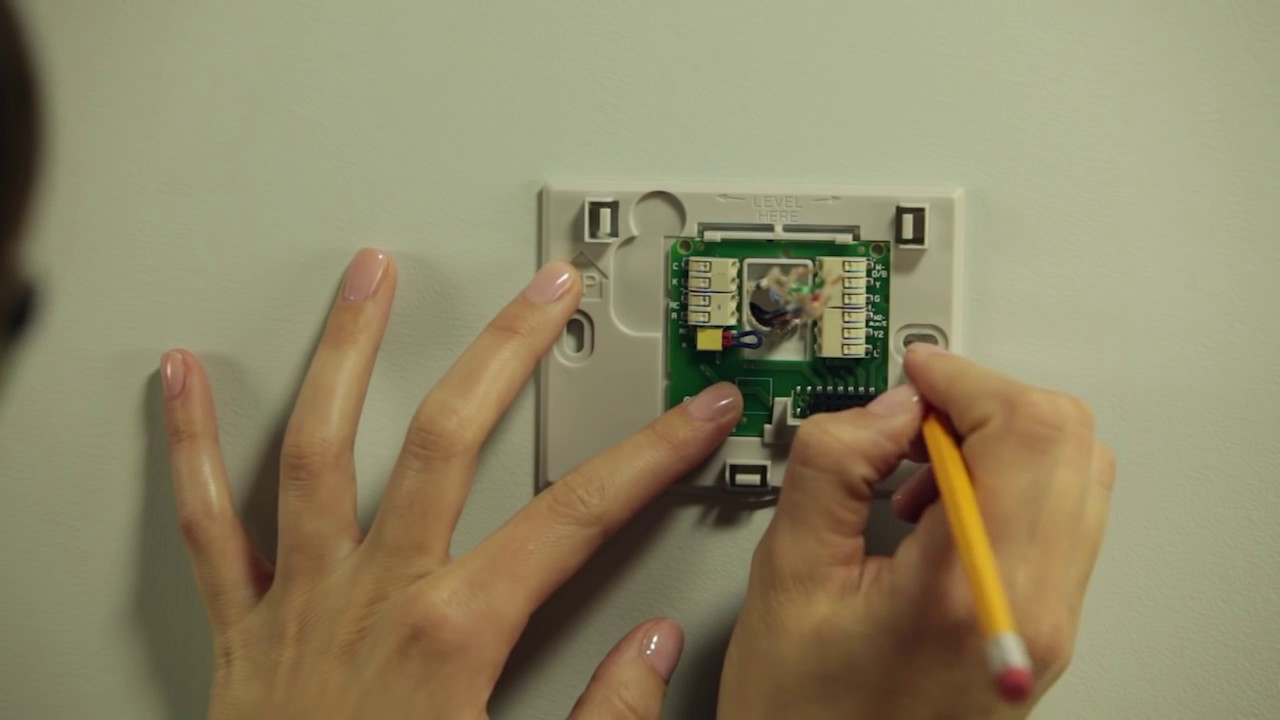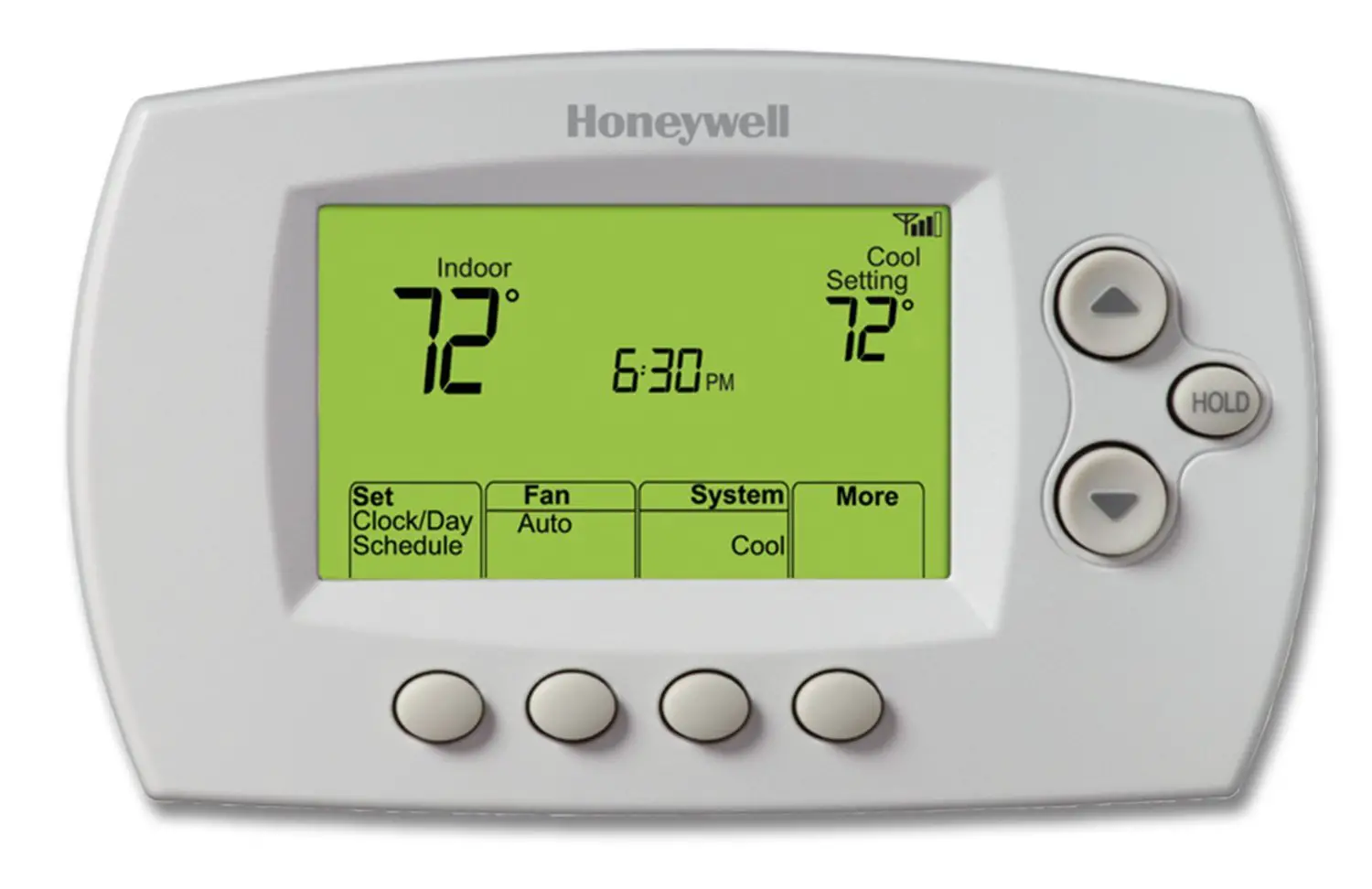Intro
A smart thermostat is an innovative device that allows you to control your home’s heating and cooling systems remotely. With the ability to adjust temperature settings from your smartphone or tablet, a smart thermostat offers convenience, energy efficiency, and savings on your utility bills. However, when it comes to installing this technology, you may be wondering whether to tackle the project yourself or hire a professional. In this article, we will explore both options and help you identify the best approach for installing a smart thermostat in your home.
When it comes to installing a smart thermostat, you have two main choices: DIY installation or professional installation. DIY installation involves taking on the task yourself, following the instructions provided with the thermostat. On the other hand, professional installation involves hiring a skilled technician to handle the entire process for you.
Many smart thermostats are designed with DIY installation in mind, making it relatively easy for homeowners to install them without professional assistance. These devices typically come with detailed step-by-step instructions and intuitive interfaces to guide you through the process. If you are comfortable with technology and have some basic knowledge of wiring and electrical systems, DIY installation may be a viable option for you.
One advantage of DIY installation is that it allows you to save on installation costs. Hiring a professional can add significant expenses to the overall cost of purchasing a smart thermostat. By opting for DIY installation, you can avoid these additional fees and invest your money into the purchase of a higher-end thermostat.
Another benefit of DIY installation is the sense of accomplishment and ownership that comes with successfully completing a project on your own. Installing a smart thermostat can be a fulfilling experience, and it allows you to have a hands-on understanding of how your home’s heating and cooling systems work.
However, it is important to consider whether you possess the necessary skills and tools for a successful DIY installation. While many smart thermostats are designed to be user-friendly, some level of technical knowledge is still required. You need to be comfortable working with electrical wiring and have a basic understanding of HVAC systems to ensure a proper installation.
In the next sections, we will explore the specific skills and tools required for DIY installation, as well as the pros and cons of taking on the installation yourself. We will also discuss the benefits of professional installation and provide guidance on selecting the right smart thermostat for your home.
DIY Installation
DIY installation of a smart thermostat can be a rewarding and cost-effective option for many homeowners. With the right skills and tools, you can successfully install a smart thermostat and enjoy the benefits it offers.
Before attempting DIY installation, it is important to assess your technical abilities and comfort level with electrical work. While smart thermostats are designed to be user-friendly, some basic knowledge of wiring and HVAC systems is still necessary.
Here are some essential skills needed for a successful DIY installation:
- Electrical knowledge: You should have a basic understanding of electrical wiring and be comfortable working with low-voltage systems. Familiarize yourself with the wiring diagrams provided by the manufacturer to ensure a correct installation.
- Technical troubleshooting: In case of any issues during the installation process, having the ability to troubleshoot and identify potential problems will be beneficial.
- Patience and attention to detail: Following the installation instructions carefully and paying attention to every step is crucial for a successful installation.
Along with the necessary skills, you will also need specific tools to complete the DIY installation. Some common tools that may be required include:
- Screwdriver set: To remove and install the thermostat on the wall.
- Wire stripper/cutter: To properly prepare the wires for connection.
- Drill and bits: Needed if you need to drill new holes for mounting the thermostat or wiring.
- Labels: To identify and label the wires during the installation process, ensuring proper connections.
Keep in mind that the tools required may vary depending on the specific thermostat model and your existing HVAC system. Be sure to check the manufacturer’s instructions for a comprehensive list of tools needed for your particular installation.
While DIY installation has its advantages, it also comes with some drawbacks. One of the main challenges is the potential risk of errors or mistakes during the installation process. Incorrectly wiring the thermostat or making other installation errors can lead to functionality issues or even damage to your heating and cooling system.
Additionally, DIY installation may take longer than professional installation, especially if you are not familiar with the process. You may need to allocate extra time for research, troubleshooting, and ensuring that everything is connected correctly.
Overall, DIY installation is a viable option if you possess the necessary skills and are comfortable working with electrical systems. It allows you to save on installation costs and gives you a sense of accomplishment in completing the project yourself. However, if you feel unsure or lack the technical expertise, it is best to consider professional installation instead.
Professional Installation
If you prefer to leave the installation of your smart thermostat to the experts, professional installation is the way to go. Hiring a professional technician can ensure a proper and hassle-free installation, giving you peace of mind and optimal performance from your smart thermostat.
One of the primary benefits of professional installation is the expertise and experience that technicians bring to the table. They are trained professionals who have extensive knowledge of HVAC systems and electrical wiring, making them well-equipped to handle the intricacies of installing a smart thermostat.
Professional installation offers several advantages:
- Expertise: Professional technicians have the know-how and experience to tackle complex wiring and HVAC systems. They can handle any challenges or complications that may arise during installation, ensuring a smooth and efficient process.
- Time-saving: Hiring a professional can save you time and effort. They are trained to install smart thermostats quickly and efficiently, allowing you to start enjoying the benefits sooner.
- Assurance of quality: Professional installation provides a guarantee that the job is done correctly, minimizing the risk of errors and ensuring optimal performance of your smart thermostat.
- Compliance and safety: Professionals are well-versed in local building codes and safety regulations, ensuring that your installation meets all necessary requirements.
When opting for professional installation, it is essential to choose a reliable and reputable service provider. Look for licensed technicians who specialize in HVAC systems and have experience installing smart thermostats. Research customer reviews and seek recommendations to ensure you select a trusted professional.
It’s important to note that professional installation will incur additional costs compared to DIY installation. The exact price will depend on various factors such as your location, the complexity of the installation, and any additional services required. However, the peace of mind and quality assurance that come with professional installation may outweigh the extra expense for many homeowners.
Furthermore, professional installation can also provide an opportunity to seek expert advice regarding the selection and compatibility of your smart thermostat. Technicians can help you choose the right thermostat for your home’s specific requirements and provide guidance on optimizing its features.
Overall, professional installation offers convenience, expertise, and assurance of quality. It is a suitable option for those who prefer to leave the installation process to professionals or lack the technical skills and confidence to tackle it themselves. By choosing professional installation, you can ensure a seamless and reliable integration of your smart thermostat into your home’s heating and cooling system.
Skills Needed for DIY Installation
When considering DIY installation of a smart thermostat, it is important to evaluate your skillset and determine if you have the necessary abilities to successfully complete the installation. While smart thermostats are designed to be user-friendly, some level of technical knowledge and skills are still required.
Here are some key skills that come in handy for a DIY installation:
- Electrical knowledge: Basic knowledge of electrical systems, including understanding wiring diagrams and working with low-voltage wiring, is essential.
- HVAC system understanding: Familiarity with HVAC systems and their components will aid in successfully integrating the thermostat with your heating and cooling system.
- Technical troubleshooting: In case of any issues during the installation process or during the setup of the thermostat, having the ability to troubleshoot and problem-solve can be invaluable.
- Attention to detail: Following the installation instructions meticulously and paying attention to each step is crucial for a successful installation.
- Patience: Some installations may require more time and patience, especially if modifications to wiring or mounting are necessary.
Having these skills ensures that you can carefully assess the compatibility of your HVAC system with the smart thermostat and make the necessary connections correctly. It also enables you to troubleshoot any issues that may arise during the installation process.
If you lack these skills or are uncertain about your abilities, it may be wise to opt for professional installation. Professional technicians are trained and experienced in handling the complexities of smart thermostat installation, negating the need for DIY skills.
Before embarking on a DIY installation, it can be helpful to review the installation instructions provided by the manufacturer. This will give you a sense of the level of technical expertise required and help determine if you feel confident in tackling the installation yourself.
It’s worth noting that some smart thermostats may have different installation requirements based on your HVAC system. Therefore, it is crucial to thoroughly read the manufacturer’s instructions and understand the specifications and compatibility of your particular thermostat model.
By assessing your skills and determining if you possess the necessary technical abilities, you can make an informed decision on whether to proceed with DIY installation or opt for professional help. Ultimately, the goal is to ensure a smooth and successful installation process that integrates your smart thermostat seamlessly into your home’s heating and cooling system.
Tools Needed for DIY Installation
When undertaking a DIY installation of a smart thermostat, having the right tools at your disposal is essential. These tools will assist you in properly connecting and mounting the thermostat, ensuring a successful installation. Though the specific tools required can vary based on your HVAC system and the thermostat model, here are some common tools that are often needed for a DIY installation:
- Screwdriver set: A set of screwdrivers with various sizes and types of heads will allow you to securely fasten the thermostat to the wall or mounting plate.
- Wire stripper/cutter: This tool will be used to strip and trim the insulation from the wires, ensuring proper connections.
- Electrical tape: A roll of electrical tape will help secure and insulate the wire connections, preventing any short circuits.
- Drill and bits: Depending on your installation requirements, you may need a drill and appropriate bits for creating holes in the wall to mount the thermostat or run wires.
- Labels: Labeling the wires during installation can help you keep track of their connections and avoid confusion.
- Non-contact voltage tester: Using a voltage tester will ensure that the power is turned off before working with the HVAC system or wiring, guaranteeing your safety.
- Pliers: A pair of pliers can be useful for bending or twisting wires to fit properly on the thermostat terminals.
These tools will provide you with the necessary means to handle the wiring, securely mount the smart thermostat, and troubleshoot any issues that may arise during installation.
It’s important to note that these are general recommendations, and the specific tools required may vary depending on your thermostat model and HVAC system. Before starting the installation process, carefully read the manufacturer’s instructions and review any tool requirements mentioned.
In addition to these tools, it can also be helpful to have a smartphone or tablet available during installation. This will allow you to access the manufacturer’s online resources, instructional videos, or troubleshooting guides to assist you throughout the process.
By having the necessary tools on hand, you can ensure a smoother installation process and have everything you need at your fingertips to complete the job. However, if you do not have access to or are unfamiliar with these tools, it may be worth considering professional installation to guarantee a proper and efficient installation of your smart thermostat.
Pros and Cons of DIY Installation
DIY installation offers several advantages and disadvantages when it comes to installing a smart thermostat. While it can be a cost-effective and rewarding option for some homeowners, there are also potential challenges and risks to consider. Let’s explore the pros and cons of DIY installation:
Pros:
- Cost savings: One of the primary benefits of DIY installation is the potential savings on installation costs. By opting to install the smart thermostat yourself, you can avoid the additional expenses associated with professional installation.
- Ownership and satisfaction: Installing a smart thermostat on your own can provide a sense of accomplishment and ownership. It allows you to have a hands-on understanding of how your heating and cooling systems are integrated.
- Flexibility and control: DIY installation provides you with the flexibility to choose your own timeline and control the entire installation process. You can work at your own pace and ensure that everything is done to your satisfaction.
- Learning opportunity: Undertaking a DIY installation can be a valuable learning experience. It gives you the chance to familiarize yourself with the workings of your HVAC system and gain knowledge about electrical wiring.
Cons:
- Technical challenges: DIY installation requires some level of technical knowledge, such as understanding electrical wiring and HVAC systems. If you lack these skills or are uncomfortable working with such systems, DIY installation may prove challenging and risky.
- Potential for errors: Without professional expertise, there is an increased risk of making mistakes during the installation process. Miswiring or improperly connecting the thermostat can lead to functionality issues or even damage to your heating and cooling system.
- Time and effort: DIY installation may take more time and effort compared to professional installation. You may need to invest additional hours researching, troubleshooting, and ensuring the correct installation of the smart thermostat.
- Limited warranty: Some manufacturers may have limited warranties or may not cover damages resulting from improper DIY installation. This means you may not have the same level of protection and support as you would with professional installation.
It is important to weigh these pros and cons carefully before deciding on a DIY installation. Consider your technical abilities, comfort level with electrical work, and available time. If you have doubts or lack the necessary skills, it may be wise to opt for professional installation to ensure a proper and worry-free integration of the smart thermostat into your home’s heating and cooling system.
Benefits of Professional Installation
While DIY installation of a smart thermostat can be an appealing option, there are numerous benefits to consider when opting for professional installation. Hiring a skilled technician can provide you with a hassle-free and efficient installation process while ensuring optimal performance and peace of mind. Let’s explore the key benefits of professional installation:
Expertise and Experience:
Professional technicians have the specialized knowledge and experience to handle complex HVAC systems and electrical wiring. They are trained to navigate the intricacies of smart thermostat installation, guaranteeing a proper and efficient integration into your heating and cooling system. Their expertise reduces the risk of errors, ensures optimal performance, and minimizes the potential for damage to your HVAC system.
Time-Saving:
Professional installation allows you to save valuable time and effort. Skilled technicians are equipped with the necessary tools and have streamlined processes to complete the installation quickly and efficiently. With professional assistance, you can start enjoying the benefits of your smart thermostat sooner without the need to research, troubleshoot, or worry about potential installation issues.
Quality Assurance:
Professional installation offers a guarantee of quality workmanship. Technicians have a thorough understanding of local building codes and safety regulations, ensuring that the installation complies with all necessary requirements. By entrusting the installation to professionals, you can be confident that the job will be done correctly, providing you with a reliable and fully functional smart thermostat.
Compatibility and Optimization:
Professional technicians can provide expert advice on selecting the right smart thermostat for your home’s specific requirements. They can assess your HVAC system compatibility and guide you in choosing a thermostat that best suits your needs. Additionally, they can optimize the features and settings of the smart thermostat to ensure maximum energy efficiency and comfort in your home.
Technical Support and Warranty:
Professional installation often comes with the advantage of technical support and a warranty. If any issues arise after the installation, you can rely on the expertise of the technician who performed the installation and seek assistance as needed. Additionally, some manufacturers may offer warranties that are only valid if the installation is completed by a professional, providing you with peace of mind and ongoing support.
Overall, professional installation of a smart thermostat offers numerous advantages, including expertise, time savings, quality assurance, compatibility optimization, and ongoing support. It ensures a seamless integration of the smart thermostat into your HVAC system, allowing you to enjoy the convenience and energy efficiency it provides without the potential risks of DIY installation.
Choosing the Right Smart Thermostat for your Home
When it comes to selecting a smart thermostat for your home, there are several factors to consider to ensure the best fit for your needs and preferences. The right smart thermostat can enhance comfort, energy efficiency, and convenience in your home. Let’s explore some key considerations to help you make an informed decision:
Compatibility with Your HVAC System:
Before choosing a smart thermostat, it is crucial to ensure compatibility with your existing heating and cooling system. Check the specifications provided by the thermostat manufacturer to confirm that it works with your HVAC system. Additionally, take note of any specific requirements, such as the number of wires or voltage compatibility, to ensure a seamless installation process.
Features and Functionality:
Consider the features and functionality offered by different smart thermostat models. Look for features that align with your needs, such as Wi-Fi connectivity, smartphone app control, voice activation, geofencing, energy usage reports, and compatibility with smart home systems. Consider which features are essential to you and prioritize them in your decision-making process.
User-friendly Interface:
Consider the user interface of the smart thermostat. Look for a clear and intuitive interface that makes it easy to adjust temperature settings, create schedules, and access other features. A user-friendly interface enhances the overall user experience and ensures that you can easily navigate and utilize the thermostat’s functionality.
Energy-Saving Potential:
One of the significant benefits of a smart thermostat is its energy-saving capabilities. Look for smart thermostats with features such as learning algorithms, adaptive scheduling, and geofencing that can help optimize energy usage and reduce utility bills. Consider the thermostat’s energy-saving potential and its ability to adapt to your lifestyle and preferences for optimal efficiency.
Brand Reputation and Support:
Research the reputation of the brand and the customer support they offer. Review customer feedback and ratings to ensure that you are selecting a reliable and reputable brand. Additionally, consider the availability of technical support and warranty coverage. Reliable customer support can be valuable in case you encounter any issues or have questions during the installation or operation of your smart thermostat.
Budget:
Determine your budget for a smart thermostat. Prices can vary depending on the brand, features, and functionality of the thermostat. Consider the long-term energy savings and convenience benefits that a smart thermostat can provide, weighing them against the upfront cost.
Professional Consultation:
If you have any doubts or are unsure about the right smart thermostat for your home, consider consulting a professional. HVAC technicians or smart home experts can provide valuable insights and guidance based on their knowledge and experience. They can assess your home’s specific requirements and recommend the best smart thermostat options that meet your needs and budget.
By considering these factors and conducting thorough research, you can confidently choose a smart thermostat that is compatible with your HVAC system, offers the desired features and functionality, provides energy-saving potential, comes from a reputable brand, and aligns with your budget. Selecting the right smart thermostat will allow you to enjoy the benefits of improved comfort, energy efficiency, and control over your home’s heating and cooling systems.
Conclusion
Installing a smart thermostat in your home can offer convenience, energy efficiency, and control over your heating and cooling systems. When it comes to installation, you have the option to go with DIY installation or hire a professional. Both choices have their own set of advantages and considerations.
DIY installation can be a cost-effective and fulfilling option for those with the necessary skills and tools. It allows you to save on installation costs, learn about your HVAC system, and have a sense of accomplishment. However, it requires technical knowledge, troubleshooting abilities, and attention to detail. Additionally, there is the risk of errors or improper installation if you are not familiar with electrical work or HVAC systems.
On the other hand, professional installation offers expertise, efficiency, and quality assurance. Professional technicians have the skills and experience to handle complex installations, ensuring optimal performance and compliance with safety regulations. While professional installation may come at an additional cost, it provides the benefits of saving time, peace of mind, and ongoing support. It is particularly suitable for those lacking the necessary skills or who prefer to leave the installation to the experts.
When choosing a smart thermostat, consider factors such as compatibility with your HVAC system, desired features, user interface, energy-saving potential, brand reputation, and budget. Research and consult with professionals if needed to make an informed decision that aligns with your specific requirements.
Ultimately, whether you choose DIY installation or professional installation, the goal is to have a properly integrated smart thermostat that enhances comfort, energy efficiency, and control in your home. With the right approach and careful consideration, you can enjoy the benefits that a smart thermostat brings while ensuring a successful installation process.







